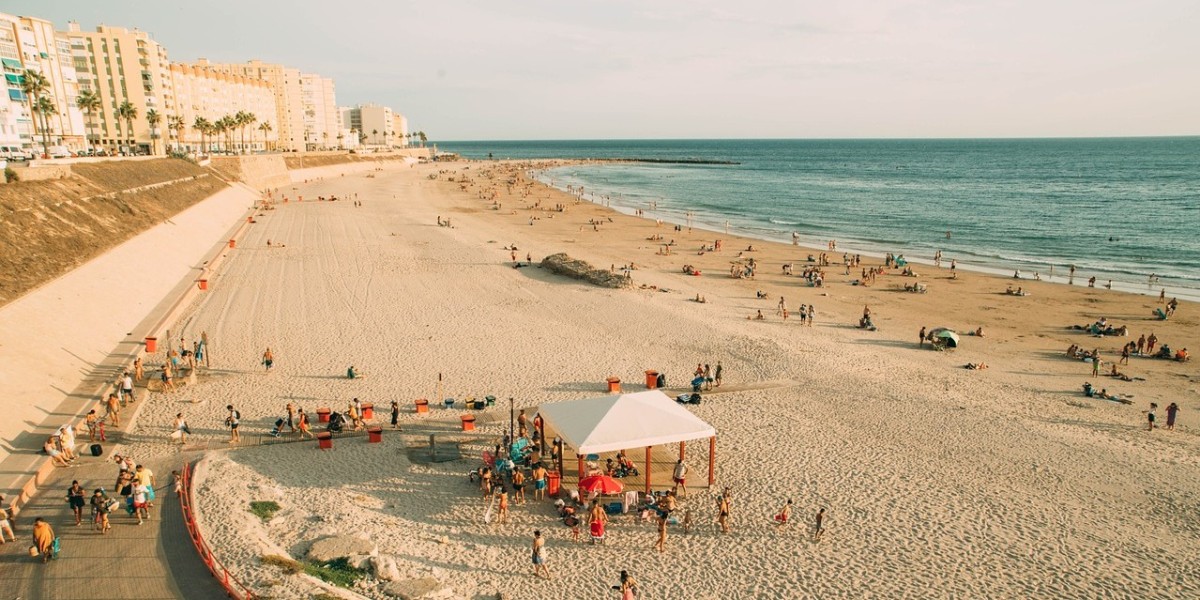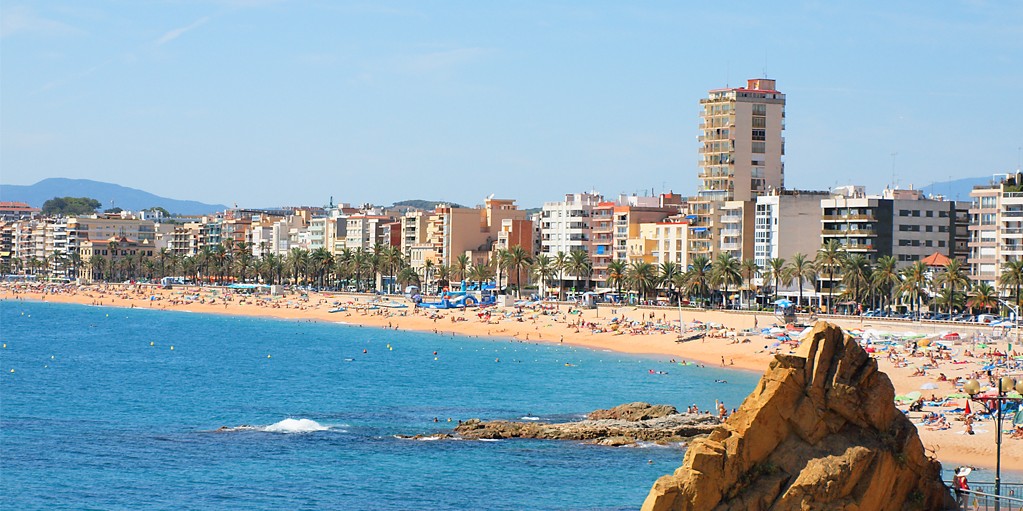
The idea of a life surrounded by the sun-drenched landscapes of Andalucia has long captured the imagination of people looking for a change of pace. It is a well-trodden path for expats from all over the world, drawn by the promise of a relaxed lifestyle and rich culture. Getting under the skin of life here means looking beyond the postcard images to understand the unique rhythm and practical realities of living in Southern Spain.
Pros and cons of living in Southern Spain
Life in the south of Spain comes with plenty of high points, but it's also wise to be aware of a few of the quirks and challenges.

Benefits of life in the south of Spain
- A more relaxed lifestyle: people tend to prioritise time with family and friends, and there's a strong culture of enjoying the moment.
- Connection to the outdoors: you are never far from a rugged coastline for a day at the beach or a national park for a hike. The climate makes it easy to stay active and make the most of the natural surroundings.
- Deep cultural roots: enjoy Moorish architecture in Granada and flamenco echoing through the streets of Seville. The food scene is also a huge part of the culture. Getting to know the local tapas or finding the best menu del día is a rewarding experience.
Challenges for expats living in Southern Spain
- Navigating the bureaucracy: dealing with paperwork can be a test of patience. Processes for things like residency for non-EU citizens (the TIE or NIE), registering your address (empadronamiento), and other official matters can be slow and complicated.
- The language barrier: while you can get by with English in the tourist-heavy coastal spots, learning Spanish is essential for true integration.
- The climate extremes: the summer heat, especially inland, can be intense, with daily life shifting to accommodate temperatures that regularly top 40°C.
The cost of living in Southern Spain
The good news is that the cost of living in Southern Spain is generally lower than in the UK and other countries, but it’s still important to understand where your money will go. The Costa del Sol also has a thriving luxury market, attracting many foreigners who are seeking fancier homes.

Andalucia property and rental prices
Housing prices can vary dramatically depending on whether you choose a city centre apartment in Malaga or a rustic cortijo in the countryside.
As a general guide, property prices in Andalucia averaged around €2,539 per m² in July 2025, while rental prices were about €12.6 per m². Expect to pay around €1,000 per month for a standard 80m2 apartment. This is one of the big draws of the south, as you’ll generally find property is more forgiving here than in the pricier northern regions like the Basque Country or Catalonia, where cities like San Sebastián and Barcelona command much higher figures.
If you are planning to buy, it's worth getting your head around the specific process for expats, such as understanding the details of how non-resident mortgages in Spain work. It's also easy to overlook the initial costs associated with setting up a home. Beyond the deposit, you should also factor in the price of removals and getting settled, so it's useful to know how much a move costs in Spain to budget properly.

Daily expenses, food, and transport
A weekly shop at the local market is much kinder on the wallet than a UK supermarket trip. Daily pleasures like a coffee or a small beer will rarely cost more than a couple of euros. This general affordability is another area where the south shines in comparison to the north, as your shop or a meal out will typically stretch further here than in Barcelona or Bilbao.
Of course, it all adds up, and your monthly outgoings for groceries, utilities, and leisure will depend on your lifestyle. Putting together a personal budget is key, and this guide on how much money you need to live comfortably in Spain can be a great starting point for figuring out what to expect.
Where is the best place to live in the south of Spain?
The best place is entirely down to what you’re looking for, as a buzzing city offers a completely different life to a sleepy white village. It really boils down to a choice between city convenience, coastal vibes, or countryside calm.

Popular cities for expats: living in Seville, Malaga, and Granada
If you crave the energy of a city, each of Andalucia's main centres offers a distinct personality. Deciding which one fits best depends on your priorities.
Seville
This is the region’s cultural and historic heart. Seville is the place to be if you love getting lost in history, soaking up traditional culture like flamenco, and diving into a world-class tapas scene. Life here is eventful, with major festivals and constant energy.
Malaga
The practical and cosmopolitan choice. Malaga has transformed itself into a modern, energetic city with a fantastic foodie scene and the benefit of being right on the coast. With its major international airport and large, well-established expat community, it’s often the easiest city for newcomers to settle into.
Granada
The bohemian, student-centric option. Located at the foot of the Sierra Nevada mountains, Granada has a youthful feel thanks to its large university population. The magnificent Alhambra Palace gives the city a unique historical backdrop, offering a life that combines culture with easy access to nature for hiking and even skiing.
The appeal of coastal towns and the Spanish countryside
For many, the dream of living in Spain is all about the sea, perhaps a stone's throw from an Andalusian Blue Flag beach. The Costa del Sol is famous for its well-established expat communities and endless amenities, while the Costa de la Luz on the Atlantic side offers a wilder, more windswept coastline. If you’re looking for peace and quiet, going inland to explore the pueblos blancos (white villages) could be for you.

Life in the Spanish countryside means more space, a closer-knit community, and often, more property for your money. You can find some surprisingly affordable homes, and it’s worth browsing for cheap property in the Spanish countryside to see what’s available. To give you a better idea, here are some of the go-to spots for expats, both on the coast and inland:
Marbella
Known for its glamorous side, with luxury villas, golf courses, and the famous Puerto Banús marina. Marbella has a large, established international community and all the high-end services you could want.
Estepona
Often described as a more traditional version of Marbella, Estepona has a beautifully maintained old town filled with flowers, a lovely long beachfront, and a very family-friendly feel.
Nerja
A long-standing favourite, particularly with British expats. Nerja is famous for its dramatic coastal views from the Balcón de Europa and a network of caves, offering a classic seaside town experience.
Vejer de la Frontera
An idyllic hilltop white village that has become very popular with a creative, international crowd. It offers history and charm while being just a short drive from the wild beaches of the Atlantic coast.
Ronda
An iconic town perched dramatically on either side of a deep gorge. It has a strong sense of history and attracts expats looking for authentic Andalusian life away from the coast.
The Alpujarras
A collection of villages clinging to the southern slopes of the Sierra Nevada mountains. This area is known for its bohemian, back-to-nature vibe and is popular with those seeking a quieter, alternative lifestyle.
Lifestyle and culture in Andalucia
The local culture is present in the rhythm of the day, the way people will stop everything for a coffee with a friend, and the importance placed on family. Getting to grips with this is the real key to feeling at home here.

Social life in Andalusia
Social life really happens around food and drink, but not in a formal, sit-down dinner party way. It’s all about the art of the tapeo – hopping from one bustling bar to the next, sharing small plates and conversation. It’s spontaneous and happens out on the street, on crowded terrazas. This is also a land of unique Spanish festivals, and every town has its feria, a week-long party that completely takes over and is the absolute highlight of the social calendar.
The Andalusian climate
The summer heat is a force of nature that reshapes the day. The streets are often deserted after lunch, and life re-emerges in the evening when the air cools, with families and friends staying out late. And to answer that classic question about winter – no, it doesn’t get 'cold' like a London winter, but it can be surprisingly chilly. You’ll often feel the cold more indoors than out, as many homes are built to keep the heat out, not trap it in.

Stay in the know about living in Spain as a foreigner—get our weekly newsletter for the latest travel, legal, and lifestyle news.
For a taste of the high life, sign up for the monthly luxury market round-up.
